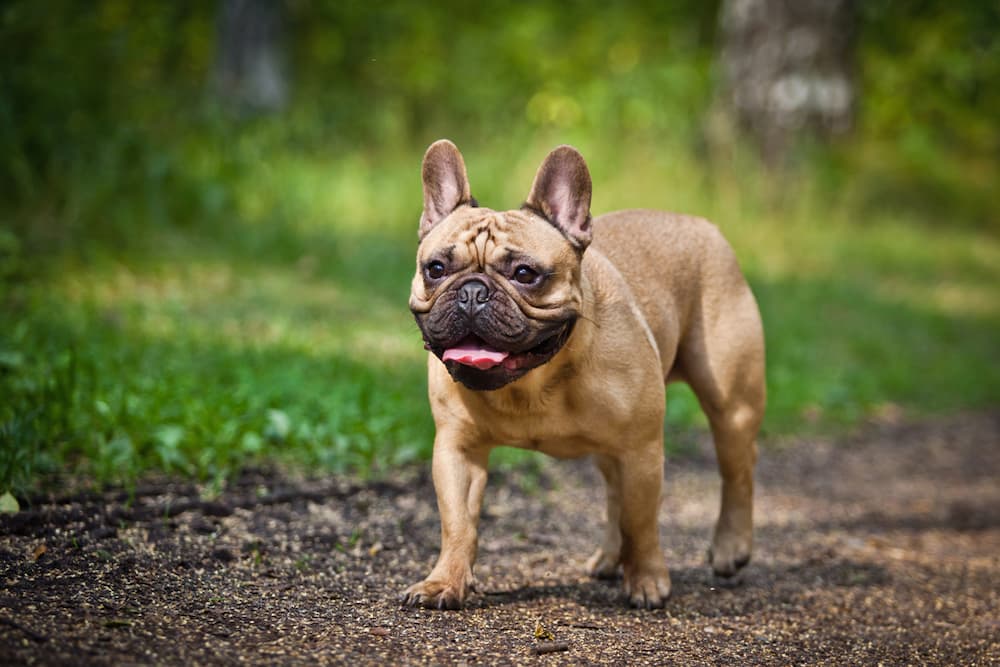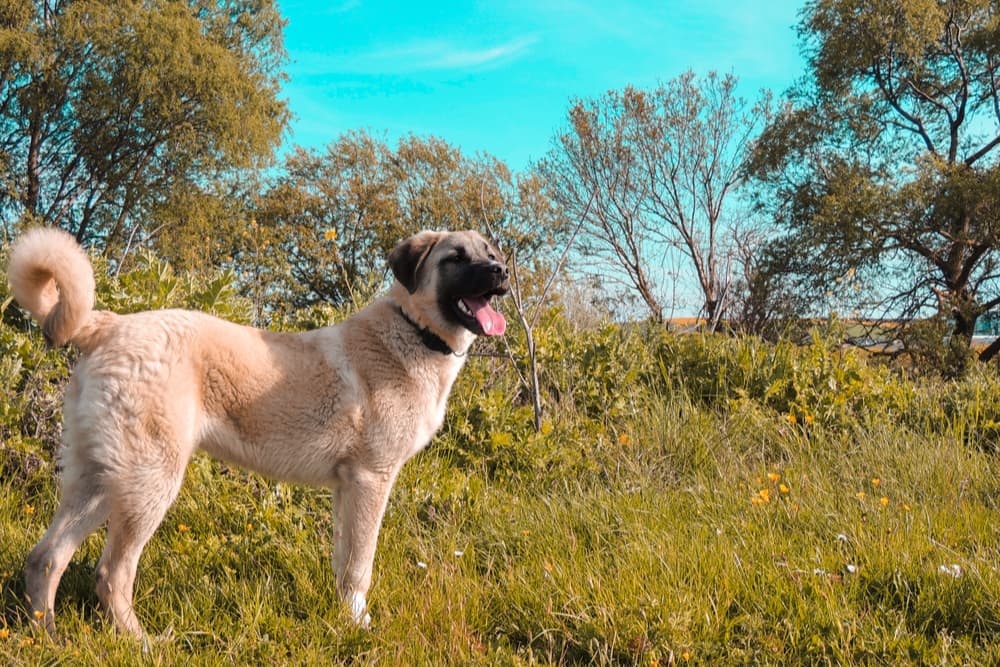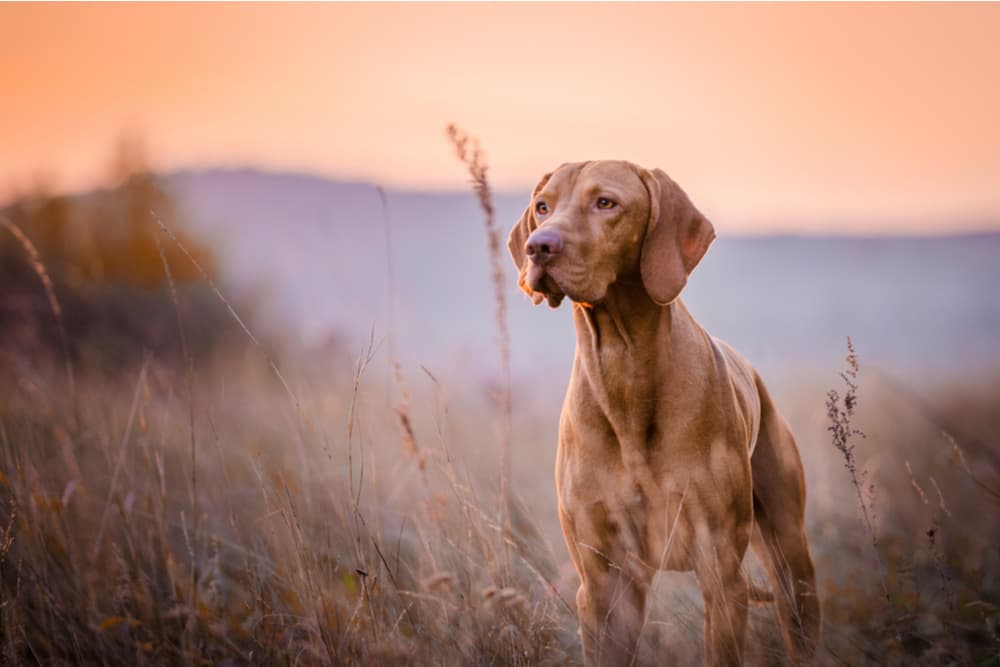11 Most Muscular Dog Breeds

Tall, short, round, slim…dogs truly come in all sizes and shapes. Some dog breeds are naturally incredibly muscular. Characterized by their athleticism and strength, muscular dogs were revered by ancient civilizations and have helped humans for thousands of years. And to this day, they are still beloved.
Muscular Dog Breeds: A Brief History

Ultimately, muscular dogs were bred and used to help humans with physical labor, hunting, and for protection.
“Different dog breeds were developed to do different jobs. Any dog that needs to run to do its job or defend people or animals might have been bred to be very muscular,” says Dr. Valarie V. Tynes, veterinary services specialist at Ceva Animal Health and a diplomate of the American College of Veterinary Behaviorists. “Muscles are needed in order to do work.”
While many muscular dog breeds were historically used for dog racing and fighting, in modern times, they have evolved to be dear companions.
11 Muscular Dog Breeds

Ready to learn about the most muscular dog breeds? Here are 11, with details on their appearance, breeding history, personality, and more.
Rottweiler

“Rottweilers are large and muscular with a big, round head and floppy ears,” says Tynes. “They are born with a long tail that breeders typically dock while the pups are just a few days old.”
Rottweilers were originally bred to herd livestock, and were used all the way back during the 2nd century by Roman legions in Rottweil, Germany (1). When the Romans left, Rottweilers were still used to accompany butchers as money carriers (via neck pouch) to markets from the Middle Ages until around 1900. But as Tynes notes, because of their strength and size, they were used to pull carts and eventually became popular as guard dogs.
“They can be very affectionate with family, but not so good with strangers,” Tynes says. “They are highly intelligent and need plenty of exercise.” Early training and socialization are important to ensure good manners and discourage unwanted behaviors.
Cane Corso

“Cane Corso males are 25-27.5 inches from the highest point of the shoulder to the ground, and females are 23.5 to 26 inches,” says Dr. Mary R. Burch, director of AKC Family Dog and certified applied animal behaviorist. “They are medium-large sized dogs that are large boned and have a large head.”
According to Burch, in the early history of the breed, Cane Corsos were dogs of conquest. “Later they did jobs such as boar hunting,” she says. “They are now all-purpose farm dogs who drive livestock and guard farms and pastures, and they are also family dogs.”
As for personality, she notes that they are protective of property and family, intelligent, easily trained, docile, and affectionate to family.
Greyhound

“Greyhounds are large, thin and well-muscled with a pointy head and floppy ears,” says Tynes. “They are also very short-haired.”
Greyhounds were originally bred as hunting dogs. They are very fast runners, so eventually became popular as racing dogs. Greyhounds can run up to 45 miles per hour (2). However, greyhound racing is illegal in 40 states in the United States (3). They also are one of the oldest known dog breeds, and have been found embellishing Egyptian tombs dating back to 3,000 B.C.
“Greyhounds can be very sweet and mild mannered, but also may have a strong predatory drive,” Tynes says. “They seem to vary greatly in energy levels. Some will need a lot of exercise, while others seem to enjoy being couch potatoes.”
Rhodesian Ridgeback

“Rhodesian Ridgebacks are large with floppy ears and a ridge of hair running down the back. Their heads are more elongated and more ‘hound like’ than the Rottweiler for example,” notes Tynes.
They were first bred in Africa, where they were developed for livestock guarding and to aid in hunting large game (4).
As for personality, she notes that they are better with known individuals than strangers.
“They have a lot of energy so need plenty of exercise and have a strong prey drive,” says Tynes.
American Pit Bull Terrier

“American Pit Bull Terriers (also referred to as Pitbulls) are smaller in frame but heavy because they are ‘blocky’ dogs, and often have a wide chest and a big square head,” Tynes says.
Pitbulls were originally bred, and were specifically bred in the 19th century in England, Scotland and Ireland, for hunting and livestock management (5). They also were bred for bull baiting (a contest between trained dogs and a tethered bull) before the sport was outlawed in 1835 in most places, Tynes says (6, 7).
“After that, Pitbulls quickly became popular as a farm dog or pet because they are typically very good with people,” Tynes says. “Typically, Pitbulls are very affectionate and friendly with people, but much less so with other dogs. They have a lot of energy and need plenty of exercise.”
American Staffordshire Terrier

“Staffordshire Terriers are a medium-sized dog, but very blocky and heavily muscled with a square head,” says Tynes. “They are born with floppy ears, but their ears are often cropped.”
Staffordshire Terriers were originally developed as a fighting dog in the United Kingdom in the 19th century (8).
“In the 18th and 19th century, along with other breeds, they were used as a fighting and baiting dog,” says Burch. “In the 1900s, the breed was valued for being more mellow than its ancestors, and American Staffordshire Terriers have been therapy dogs, movie dogs, and well-recognized military dogs (i.e., Sgt. Stubby of WWI). ”
These loyal, intelligent dogs do well when they feel like part of the family, but can be wary of strangers and less tolerant of other dogs.
French Bulldog

“French Bulldogs are stocky, compact dogs with a square head and a flattened muscle. They are born with short tails,” says Tynes. This brachycephalic breed (flat-faced, short-nosed) was bred from the English Bulldog.
French Bulldogs became popular in France via England from the lace industry, where they became popular during the Industrial Revolution (9).
“French Bulldogs were bred essentially to be a toy Bulldog. They were primarily bred to be pets or lap dogs, but also ratters (rat catchers),” notes Tynes. Personality wise, they are known to be affectionate, energetic, and playful with a stubborn streak. (Get advice on How to Train a French Bulldog.)
Doberman Pinscher

Doberman Pinschers are medium-sized dogs that have a square, muscular frame that is usually trim with long, powerful legs (10). They also have pointed ears and smooth, short hair. They originated in Germany during the 19th century, originally for police and military work (11). And they also have been used as watchdogs and as guide dogs for the blind (12).
“Known as the ‘tax collector’s dog,’ the Doberman was bred by Louis Dobermann to protect him on his rounds as a tax collector,” adds Burch.
As for temperament, Doberman Pinschers are described as “energetic, watchful, determined, alert, fearless, loyal and obedient.”
Boxer

In appearance, Boxers are medium-sized dogs that have a sturdy and square frame, as well as short hair and a smooth coat (13).
Boxers originated in Germany as hunting dogs, and are a mix of breeds including the now-extinct Bullenbeisser breed, Great Dane, and English Bulldog (14).
Boxers are extremely devoted and loyal to their masters, and are known to be watchful and self-assured (15). While they are trusting of family, they may be distrustful of strangers.
“Boxers are good with children, affectionate with family, alert, dignified, self-assured, playful, but patient and stoic,” notes Burch. “Wary with strangers, intelligent.”
Korean Jindo

The Jindo is a medium-sized dog that has a yellow and white coat with medium-hair (16). The Jindo is believed to have originated in South Korea and domesticated during the Stone Age.
Known as hunting and guarding dogs, Jindos are very intelligent and territorial, and may not trust unfamiliar animals (17). As such, they should “be cautiously introduced to other pets and animals in a family.”
Kangal Shepherd Dog

Kangals are large, extremely powerful, and heavy-boned dogs. They have large heads and drop ears, with a double coat that is dense and can range in color from a white, tawny tan to darker browns and black at the ears (18).
Kangals are the most popular dogs in Turkey, where they originated (19). Historically, they have been used as guard dogs “to watch over livestock, factories and houses.”
They are prized for their “strength, intelligence, loyalty, endurance to extreme temperatures, and lack of predatory behavior towards livestock.”
And as for temperament, Kangals are “gentle and trustworthy with their people or animals, but if the need arises they will become very protective.” (20)
Training Tips for Muscular Dogs

If you will be adding one of these muscular dog breeds to your family, there are some best practices and safety tips that can help set you and your pet up for success. Here are four things to keep in mind when training your muscular dog.
Properly socialize puppies.

“Ideally go to a puppy socialization class,” Tynes recommends. “A leading cause of problem behaviors is fear and anxiety, which are most often associated with a dog not having been well socialized. Socialization does not mean that dogs should be forced into situations where they are acting afraid! Socialization experiences must be positive for the dog, and should be handled carefully to be sure they are positive. It is important that the dog has a choice when it comes to interacting with someone and/or investigating something.”
Use positive reinforcement.

“[Punishment-based training] has been proven to increase fear and anxiety, and can potentially lead to aggression,” Tynes says. “Instead, use positive reinforcement-based training and follow the general principle of not putting the dog into situations where they are likely to perform bad behaviors. At the same time, reinforce all good behaviors, ideally with food or play, depending on the situation. This is referred to as ‘setting the dog up to succeed.’”
“Positive reinforcement is a good approach for all breeds, but in particular, if you can manage a large, muscular breed with food rewards or a toy during training, your job as a trainer will be easier and safer,” Burch adds.
Don’t use prong and choke collars.

“These can make any dog more anxious and aggressive about meeting people and dogs on walks,” Burch says. “Instead, control should be achieved with good, consistent positive reinforcement training, especially while the animal is young and smaller. No-pull harnesses such as the Freedom harness should be used.”
Build a bond with your dog.

“Provide regular socialization, exercise, and a training activity so the dog has both physical and mental stimulation,” Burch says. “Then, follow the basic good practices for dog training—be consistent and reward good behavior.”









